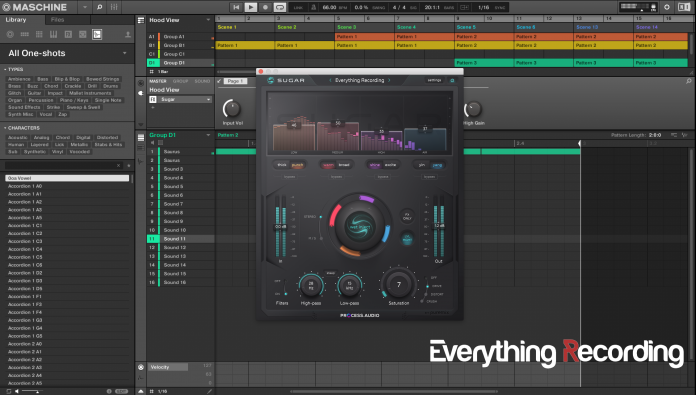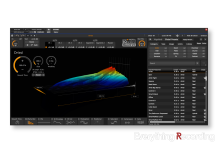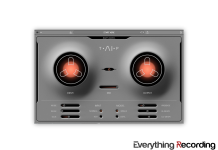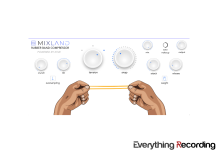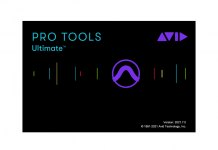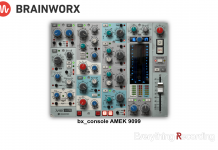- Saturation section great on its own
- Almost any type of track can benefit from Sugar
- Wanted to be able to use different slopes for High and Low pass filter
- If DAW doesn't have delay compensation, cannot use linear phase mode (not PROCESS.AUDIO's fault but needed to be mentioned)
Sometimes in a mix, it’s not what you subtract that makes the biggest impact. It’s what you add. Process.Audio’s Sugar gives several selections within one plugin to add more greatness into tracks.
Process.Audio is a new plugin venture branched off from the pureMix.net team. This group has created a site which has become a wealth of knowledge for all things tracking, production, mixing, mastering, and even cooking! Led by the aforementioned cooking expert Fab Dupont, the Process.Audio team has released their first plugin, Sugar.
Coined as “The Ultimate Audio Sweetener”, Sugar is definitely a “More” type plugin. Utilizing a lot of advanced under-the-hood processing, this plugin does all of the hard work while you sit back and dial in each setting until it sounds like you want. While Process.Audio doesn’t say for sure what’s going on under the hood, just from listening to the results, the plugin seems to incorporate forms of analog modeling, dynamics control, harmonic exciters, transient enhancement, saturation, and a lot of sidechaining to inject character into tracks. This character can be compared to the same “magic” that analog hardware gives to audio. Think of Sugar as your bridge to get you from bland to final product much faster than traditional digital mixing.
Controls are laid out in a very logical manner. Across the top, are four different bands. These bands represent the low, mids, highs, and ultra-highs. Inside of each band is two different flavors of processing, labeled with adjectives to describe their intent. Select one of the labels and turn the fader above the band up to add the character to the track. As you turn the fader up, obviously more of the characteristic selected will appear in the track. The signal is blended into the dry signal automatically according to how much is wanted, eliminating the need for a blend knob.
On top of each band-specific control, input selection, High and Low Pass Filters, Saturation, and Output Volume can be tweaked as well. Each of the filters can span the entire frequency spectrum from 0Hz to 20kHz and work in either 12dB or a 48dB per octave slope. Saturation also comes in three flavors, offering everything from subtle saturation to outright mayhem distortion.
Not only can Sugar work in stereo, but a mid-side mode is available where the fader for each band becomes two smaller faders. The mid is controlled by each band’s left fader and the side is controlled by the right. This gives the ability to add warmth to the center of a track, while adding air to the left and right.
Want to hear exactly what is being added to the dry signal? Select the FX only button to hear a solo of the processing being applied. Want to hear more of all of the bands at once without individually tweaking each slider? Turn the big knob in the center and more can be added of all bands instantly, similar to a VCA fader. Want to compensate for all of the gain that has been applied from the enhancements you’ve made? Select the Level MGMT button. While this is not an “Auto Gain” setting, it does consider the amount of extra energy being applied across the whole spectrum and give a best guess for level matching. If more dialing in is needed, simply adjust the output level.
In operation Sugar does exactly what it advertises. Tracks are instantly transformed. Lows jump out of the speakers without being too intrusive, the mids bring depth back into thin sounding tracks, and the top end soars. This is definitely one of those plugins that require a lot of A/B comparison. Ear fatigue can set in quickly especially in the high end so start sparingly. The top end can be tricky, but the Yin and Yang setting tackles this issue by utilizing individual phase settings. It is advised to not just settle on one due to the properties of phase on the high frequencies in a track. One will stand out as the most useful – go with that one.
The Thick and Punch settings add huge bottom end to a track without muddying up the mix. The warm setting brings just the right amount of weight and presence to a mix. Broad pushes the mids out front to un-bury a track that can’t seem to make its way to the front of a mix. Shine throws more presence in the highs and excite brings in extra harmonics to material that is lacking. Finally, Yin and Yang bring the ultra-highs to bring that halo of air to a track.
In use I found myself using the low setting and warm the most with just a little yin or yang depending on the need for the track. Usually, I’ll push each band hard at first to see which selector I like and bring it down while A/Bing the FX versus the bypassed and blended signal. Once I get each setting where I like it, I dial it back with the big knob until it fits right in the mix. Usually, I’ll then go take a break and come back, switching between bypassed, processed, and my reference mix. Moderation is key with Sugar.
My only issues I had was I wish the slopes of the filters were independent and offered a 6dB per octave slope as well just to subtly round off the highs and lows. I also had to be very careful with shine and excite because it didn’t take too much for the track to get harsh quickly. The other issue is the CPU usage. Because of all of the aforementioned processes I think Sugar is using, it definitely uses a lot of processing. The linear phase setting especially introduces significant delay so set your DAWs or Sequencers to compensate for this. Unless you use Maschine, like I did, and have no delay compensation. At that point, Linear Phase can be turned off and the plugin can function inside of Maschine.
For the money, at $150.00, the value isn’t terrible for what you’re getting especially if you are the type who wants to just create music and not deal with the technical, or a professional with strict timelines.
All in all, I feel Sugar does stand out in a sea of plugins that make the same claims. Another plugin that would be comparable is Mango (Review Here). I liked the layout, I liked the visual feedback showing where the audio is being enhanced and I especially liked the saturation settings. Overall the plugin has made its way into my mixes in different places.
It’s great to see a company who trains on the ins and outs of audio putting their experience to use in the form a plugin. I’m looking forward to seeing what they do next.



